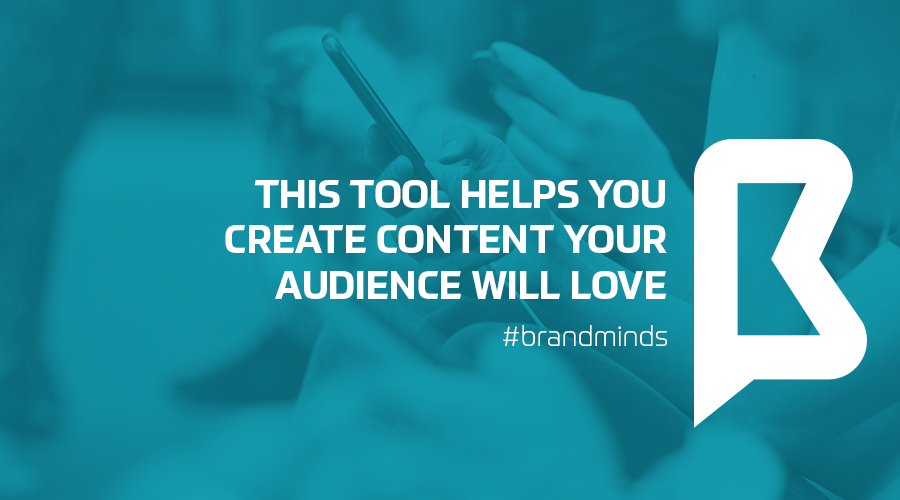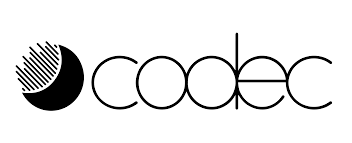This Tool Helps you Create Content your Audience Will Love
Just as you cannot drive your car blindfolded, you cannot design your marketing strategy without thorough knowledge of your audience. How can you write content if you don’t know whom you’re writing for? The more details you know about your audience, the better you can craft your content and the more efficient your content strategy will be.

Are you a marketer or brand manager looking to update your audience profile?
Do you seek ways to increase engagement on your content?
This tool can help you.

We started Codec to empower marketers and creatives with the empirical evidence they need to make better decisions and we are proud to have worked with some of the best in the business since founding Codec in early 2015.
Codec team
Codec is a product developed by a team of marketers, technologists and data scientists whose purpose is “helping creatives and brands make great content with confidence”.
What is Codec?
Codec is an AI powered cultural segmentation platform and consumer insight tool that allows brands to discover, interrogate and activate new audiences.
Here is how marketers can benefit from using Codec:
- Identify and understand existing target audiences and personas;
- Derisk creative and strategic decisions;
- Increase content performance.
How does CODEC work?
CODEC works as a process, by going through three stages:
1. Select your audience – you can choose from your existing personas/communities, your existing social handles or you can choose from over 1500 Codec pre-built audiences;
2. The platform proceeds with gathering the data and extracting the insights using sophisticated AI and machine learning, from natural language processing to neural nets;
3. Use the insights to inform creative decisions in any stage of the content creation process, be it research, strategy, creative, or distribution.
What kind of insights does Codec provide marketers with?
Psychographics are stronger than demographics
Demographics are no longer enough to get a complete profile of your target audience. Your audience is defined beyond standard criteria such as age, location, sex etc.; behaviours are shaped and triggered by how strongly your audience feels and resonates with a certain subject or interest.
Codec helps marketers discover these interests by providing them with psychographics so they can understand their audience in a deeper and more relevant way.
Here are 8 key insights and data that Codec provides:
1. Passion Point & Interest Analysis
This module analyses the level of engagement that the audience has with any particular interest. Codec tracks over 1,500 cultural interests across multiple European, South American, North American and Asian countries and territories to understand the interests that truly resonate with a target audience. The platform monitors in real time billions of content interactions from millions of users across social media, categorised into our 1500 interests. Marketers receive detailed analysis of their target audience’s passion points from their interactions with 3rd party content.
Benefit: Marketers are provided with actionable & shareable content strategy and enhanced content briefs.
2. Interests over time
As we grow older, our passions change: we lose interest in some of them and we discover other interests or beliefs that we feel strongly about.
Codec’s AI understands the 3rd party content that your audience interacts with and can track how the audience’s interests are changing over time.
Benefit: With the help of this tool, marketers can catch a rising trend or create evergreen content based on stable interests confirmed over time.
3. Personality analysis
Codec goes even further than identifying interests; it understands the core values and personality traits within a tribe or audience. It outlines core personality types by mapping their written text and content preferences.
Benefit: marketers can ensure the content includes the right tone, which dramatically increases shareability, affinity and purchase intent.
4. Optimal platform and format
There are so many formats you can deliver your content in: text, photographs, videos, infographics, epapers, podcasts etc. Which of these formats does your audience prefer and engage with? It can take a lot of time to pinpoint your audience’s preferred content format. Once you established the right format for your content, which platforms do you use to deliver it?
Codec provides marketers with knowledge of the formats and platforms that resonate with their audience so they don’t have to A/B test.
Benefit: This tool helps marketers make precise tactical content decisions to maximise the effectiveness of content through smart distribution.
5. Visual imagery analysis
A picture is worth a thousand words, but the right picture is worth an increase in brand awareness through engagement. Through deep learning and neural nets over millions of types of image, Codec sees the visual imagery and elements that most engage your target audience.
Benefit: Marketers can understand what genres of image content works best. Identify the framing, colour, tones and topics that are in-demand from their target audience.
6. Trending content
Delivering the content your audience is looking for at the moment they need it is a recipe for success. Google calls these moments micro-moments.
Codec identifies the recent, real-time content that is trending among your target audiences.
Benefit: Marketers can pinpoint the specific content that their target audience is spending time consuming.
7. Media planning reports
Nobody likes talking in an empty room and this tool helps you avoid it. Codec tracks exactly where your target audiences spend time online so you can target them effectively, increasing ROI.
Benefit: Marketers can customise entities they do or do not want to target against in order to protect their brand and increase effectiveness of targeting.
7. Influencers
Influencer marketing can drive engagement and increase brand awareness when done correctly. The success of an influencer marketing campaign lies mostly on choosing the right influencer.
Codec picks the most relevant and resonant influencers to use for creation and distribution.
Benefit: Marketers can identify the optimal influencers, YouTubers, bloggers, celebrities and brands that have an impact on their target audiences, and pinpoint what topics influencers would most effectively explore with their communities.
Eve, an UK on-demand mattress company doubled its sales using content developed with Codec insights:
Wrapping up
Here are the benefits of using Codec to help you create the right content for your audience:
- Better understanding of your audience by discovering the interests that truly resonate with it;
- Identifying topic pillars for the content you will create;
- Understanding the motivators for your target audience’s interests;
- Discovering evergreen content;
- No more A/B testing;
- Finding what content format and which platform to distribute it on for maximum impact with your audience;
- Which content your audience loves to engage with;
- Identifying the influencers that have the most resonance with your target audience;
- Making strategic decisions with confidence;
- Validating your choices and strategy plans.
5 domains that will be revolutionised by VR – part I
The virtual reality is here and ready to help not only entertain, but educate and influence profoundly our lives, for the better. Here are 5 domains that already see a big influence and that will see even more in the future.
- The real estate industry
Virtual reality can be a great asset when it comes to the real estate. From buying a house, 360 views and being a help for the real estate officers, VR can come in handy and prove to be really helpful. When it comes to open houses, a majority of the real estate domain is moving, well, to domains. The entire estate agent process can be performed online on sites like eMoov and CastleSmart, with virtual reality added in, buying a house is about to become a whole lot more lazy.
When a client is interested in buying a specific property the estate agent will usually arrange a viewing of said property or, in more lavish cases, host an open house. These events allow the potential buyers to walk through the home and examine the property. Now, imagine the prospective shopper was able to view the property from the comfort of their own home. Likely it would result in a greater interest for that residence which would create a faster sale. With VR this is very possible. Clients could put on their headsets and could be electronically strolling through the property within seconds. This means a lot of time and resources that are speared.
Moreover, the virtual reality can help so that the entire inspection could take place from the workplace of the agent. Several images and videos of the property would need to be taken to ready the virtual home for inspect. The same procedure would need to take place if a valuation was to be made via VR.
Also, most trainee estate agents learn the ropes by shadowing one of their senior colleagues on the job, following them around on viewings, visits and valuations, etc. Virtual training methods could be created which pits the user in situations that they would face on the job, such as getting questions from potential buyers, explaining features in a property. This could save real estate firms thousands in training expenses.
2. Education
According to the Smithsonian Mag, the students in classrooms across the United States and parts of Europe will soon be able to go on field trips to Buckingham Palace, Machu Picchu and the Great Barrier Reef, but they’ll be doing it through virtual reality. Google recently announced that it is expanding its Expeditions Pioneer Program, which brings virtual reality field trips to classrooms using Google’s cheap, smart phone-based VR viewer, Cardboard. The goal is to expose students to places they wouldn’t be able to see otherwise.
The idea for Expeditions came from a hackathon in Google’s education department. Given 36 hours to create a tool that would boost student engagement, Jen Holland, then a product manager at Google Apps for Education, drew on existing Google assets—the recently launched Cardboard, some teaching apps in development and a huge archive of 3D maps and photographs. She combined the three to make interactive virtual reality lessons, which she calls “experiences.”
Students can use Cardboard—an inexpensive pair of VR goggles made from a cardboard cutout, magnets, an Android phone and an app—to move through an experience that their teacher controls from a tablet. The Expeditions program has distributed the equipment to classrooms and worked with teachers to figure out lesson plans, but now, Holland says, they’re opening it up, so any teacher with a tablet and access to VR viewers (Cardboard costs about $20) can use it. With lessons loaded on the tablets, teachers and students don’t need to have internet access, which is important for low-resource classrooms.
Once students put on the VR headsets, they’re immersed in a 3D version of Machu Picchu or the Smithsonian’s National Museum of Natural History. They can look around, and the teacher can share information about things they’re seeing. Google built a Great Wall of China experience for a fifth grade math class, to give the students a more tactile lesson about multiplication. The same experience has been the topic of conversation in a 10th grade Chinese language class, and it provided physical context for students in a 12th grade history class and an anthropology lecture at a Brazilian university.
More you can read here.